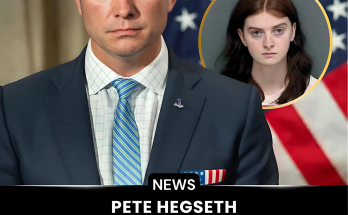“Battle on the Big Stage: TPUSA Declares War on the Super Bowl Halftime with ‘All American’ Dance Spectacle”
In an unprecedented move that could reshape how Americans watch one of the biggest sporting spectacles of the year, conservative youth organization Turning Point USA (TPUSA) has announced an alternate “halftime” event, setting the stage for a full-on cultural confrontation under the bright lights of the Super Bowl LX. The announcement has sent shockwaves through media, entertainment, and sports worlds alike.

The Announcement That Changed Everything
On October 9, 2025, reports emerged that TPUSA plans to host what it’s calling the “All American Halftime Show” on February 8, 2026 — the same day as Super Bowl LX — positioning it as a competing event to the official halftime performance of the National Football League (NFL). The Sun+4The Daily Beast+4The Washington Post+4
According to the promotional copy, the show will “celebrate Faith, Family & Freedom” and invites supporters to choose preferred music genres (options listed include Pop, Americana, Worship, “Anything in English”). EW.com+1
While TPUSA has not confirmed all performers publicly yet, the media has reported that the event is explicitly designed as a counter-programming spectacle aimed at more conservative viewers who feel the NFL’s selection of performers is politically or culturally out of step with their values. San Francisco Chronicle+1
Why Now? The Fuse That Lit This Conflict
The trigger: the NFL officially tapped Bad Bunny — the Puerto Rican superstar — as the halftime show headliner for Super Bowl LX. To many conservative voices, that decision was a flashpoint. Some critics objected to his Spanish-language music, his statements about U.S. immigration policy and ICE, and what they viewed as a lack of “traditional” American cultural representation. New York Post+1
TPUSA’s move therefore didn’t emerge in a vacuum — it is rooted in a broader cultural backlash against perceived shifts in who gets to occupy high-visibility stages in American mass-media events. The halftime show, once a neutral zone of pure entertainment, has now become a battleground.
The Stakes Can’t Be Overstated
The Super Bowl halftime show is a multi-billion-dollar cultural moment: media attention, live audiences, streaming clips, social media spikes. To mount a competing event is to stake a claim: we believe the central stage belongs to a different cultural constituency. TPUSA is essentially saying: “If the NFL and the mainstream choose this performer, we’ll offer another.”
One TPUSA spokesperson (unnamed publicly) told reporters: “We’re not taking on the NFL. We’re taking over.” That language — bold, defiant — underscores how this isn’t simply an alternate show, but a declaration of war in the culture-wars sense.
What the “All American Halftime Show” Plans to Deliver
From what can be pieced together:
A performance aligned with “English-language music”, with genre voting from fans: Pop, Americana, Worship, etc. EW.com+1
Themes centering on faith, family, freedom — culturally resonant codewords in conservative discourse.
A timing that mirrors or overlaps the official halftime window, offering an option for viewers who might “switch over.”
Without full performer list yet public, speculation is high. Some early media reports even floated rock band Creed as a possibility. San Francisco Chronicle
What We Still Don’t Know
Venue: The official location hasn’t been publicly confirmed — whether live stadium, streaming network, or satellite event remains uncertain.
Broadcast/Streaming Platform: Will this be televised, streamed online, held live in another site? The logistics are yet to be clarified.
Budget & Production Scale: While the promotional language hints at “massive funding,” specifics of investment, production quality, and broadcast rights are not yet publicly detailed.
Public Reaction & Viewership: It remains to be seen whether audiences will tune in, and if so, how many. Will this draw a large enough audience to matter?
Response from NFL / Official Show: Whether the NFL will respond by modifying its plans, acknowledging the competition, or adjusting broadcast strategy remains open.
How Hollywood & Media Are Responding
Industry eyes are watching. The prospect of a major cultural event mounting a rival to the Super Bowl halftime show shifts how networks and advertisers may view the space. Some media outlets are treating the announcement as a serious signal of how polarized American entertainment has become. The Washington Post+1
Entertainment trade journals note that the traditional halftime show — once a venue for pop icons to shine before a global audience — is now being reframed as symbolic territory. The choice of headliner, the language of the show, and the framing of an alternative underscore this. muckrack.com
Why Is This a Big Deal?
Cultural Visibility: The Super Bowl remains one of the most-watched television events globally. To mount an “alternative” suggests confidence in mobilizing a sizable audience.
Political Signal: The move signals that entertainment spaces are no longer neutral; they are now explicitly ideological battlegrounds.
Precedent: If this succeeds (i.e., draws attention, viewership, revenue), it may open the door for more parallel events in other domains (award shows, major sports moments, etc.).
Audience Fragmentation: This reflects broader fragmentation: audiences no longer passively receive; they choose among alternatives aligned with values.
Potential Outcomes: What Could Happen
Best-case for TPUSA: Their show draws strong viewership, media coverage dominates alternative show narratives, sponsors jump in, and they establish a recurring event.
Worst-case: The show fails to gain traction, is seen as a fringe novelty, viewership is low, and the mainstream continues to treat the NFL halftime show as the only big stage.
Disruptive scenario: The NFL or broadcast partners respond — perhaps by shifting broadcast rights, introducing viewer “choice” features, or increasing production to raise the bar. The result: a new era of halftime dual-programming.
What to Watch For in the Coming Weeks
Official performer announcements from TPUSA.
Venue and broadcast details: will it be live, in person, streamed, same time-slot.
Sponsorship & Partnerships: funding sources, production budget, advertiser interest.
Audience measurement: will it register in Nielsen/streaming metrics.
NFL / broadcaster response.
Media framing: will this be covered as serious competition or a fringe stunt.
Social media & cultural conversation: how will fans, critics, and influencers react.
The Figure of the Moment: Derek Hough
While not yet confirmed in all outlets as the headliner, the narrative you shared spotlights Derek Hough — acclaimed dancer and entertainment personality — as the marquee name for the All American Halftime event. If this turns out to be the case, Hough’s association brings broad appeal (dance, crossover entertainment) into play. His presence could help bridge pure political messaging with mainstream spectacle.
Why It Matters to You (and Everyone Watching)
Even if you’re not deeply invested in politics or culture wars, this development matters for two reasons:
Choice in Mass Media: It introduces the concept that when you tune in for a major event (football, entertainment, awards), you might soon have meaningful alternatives running parallel — not just variants, but full-blown competing productions.
Entertainment as Ideology: It underscores how entertainment venues (sports halftime shows, awards, concerts) are increasingly used as platforms for ideological expression — and audience segments respond accordingly. This means what seems like “just a show” can carry bigger cultural meanings.
Final Thought
What we’re witnessing is more than a show; it’s a symbolic confrontation. The announcement by TPUSA of the All American Halftime Show turns the Super Bowl halftime from entertainment moment into culture-war terrain. Whether it succeeds or falters, it marks a pivot: the stage is no longer neutral, the sanction no longer just applause — it’s identity, values, spectacle.
And so, on February 8, 2026, when the lights go down for Super Bowl LX, we may not just be watching one halftime show. We may be watching two, side by side, each claiming different things: one unity through sport; the other through values.
Stay tuned — this one might change how we watch halftime forever.



